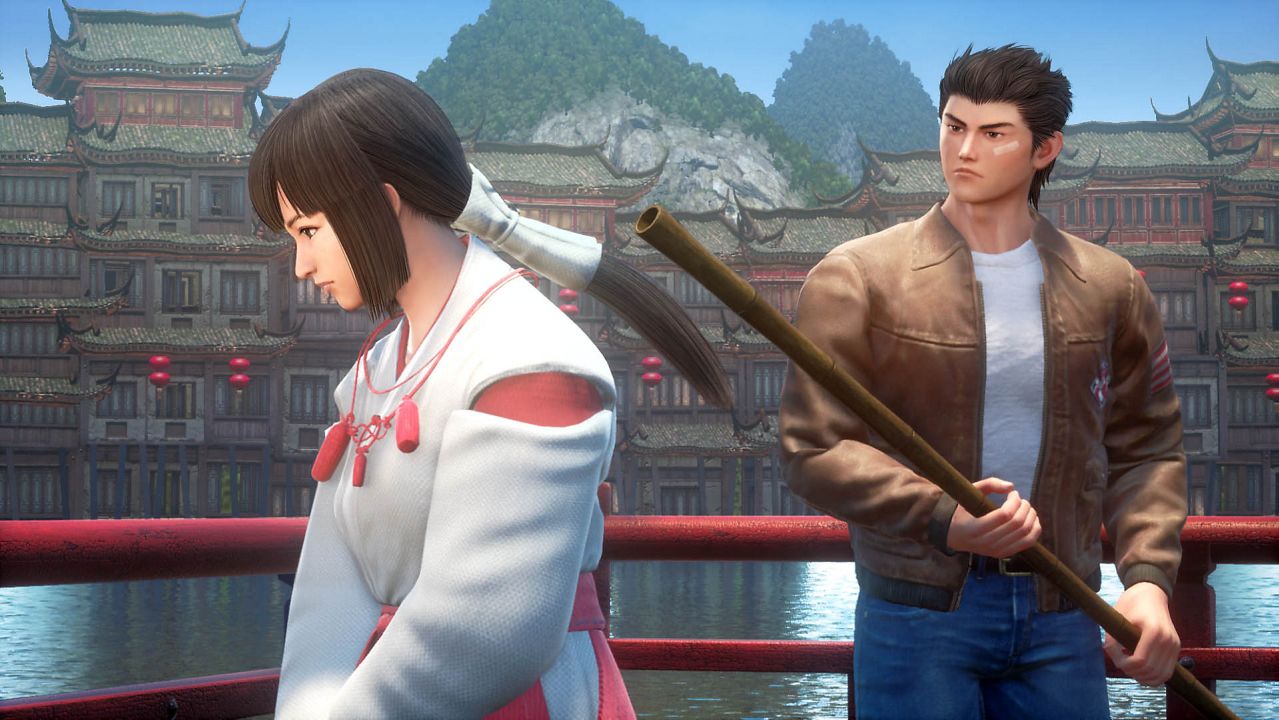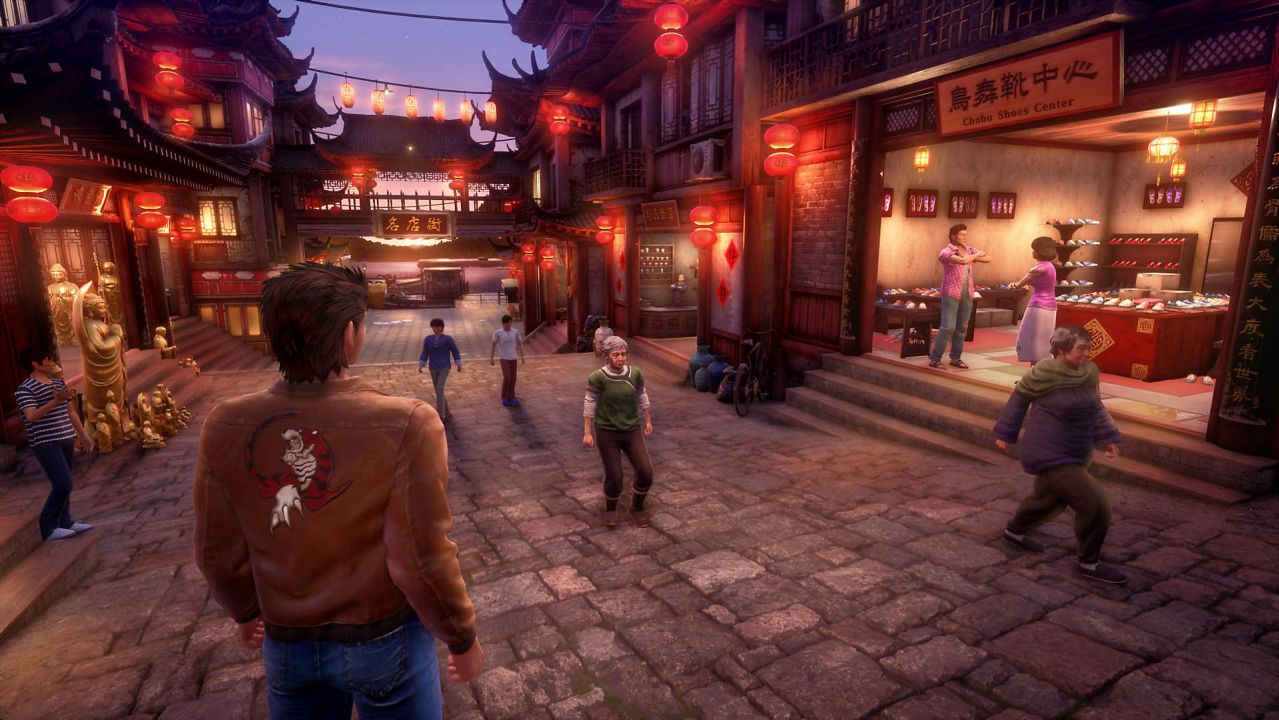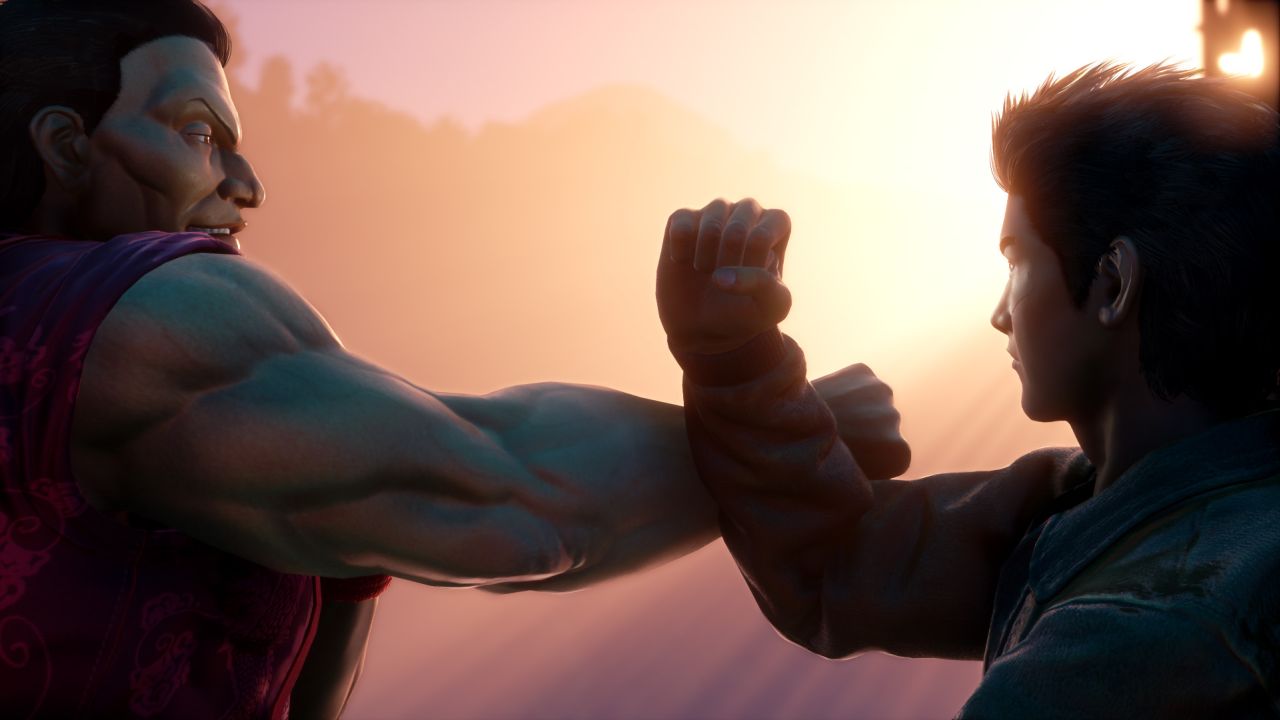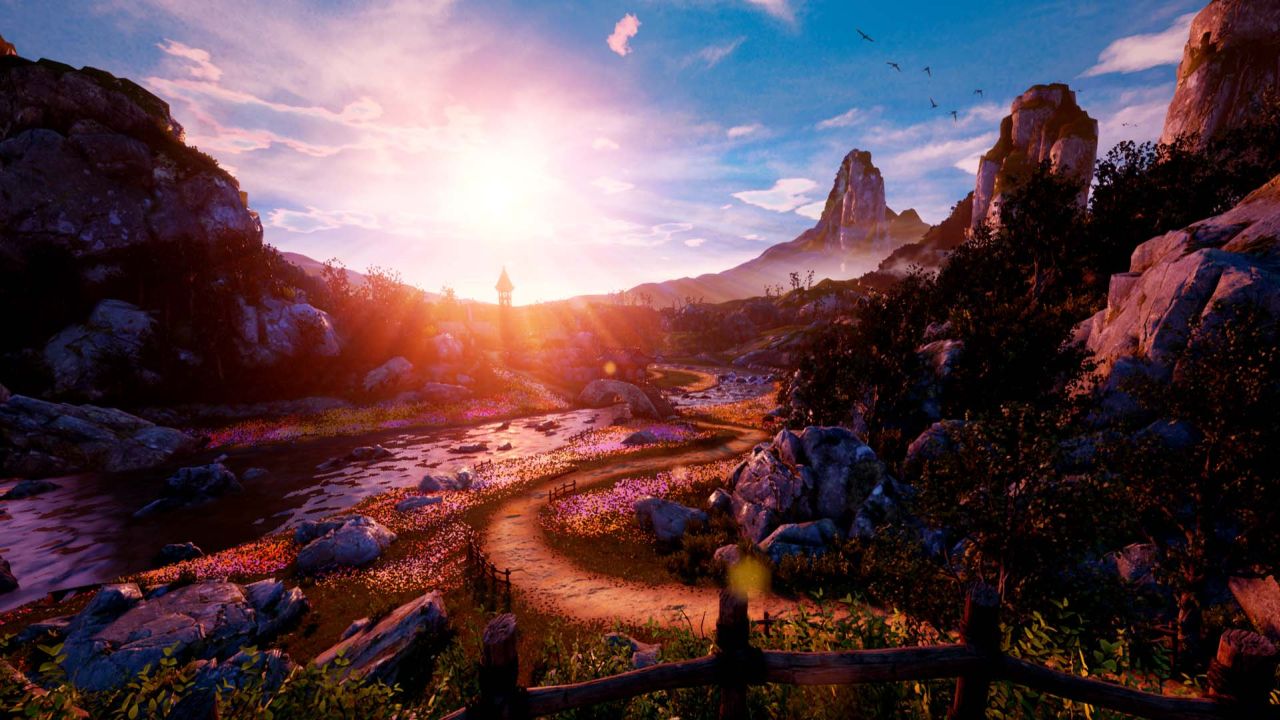Shenmue 3 Review
Stuck in the past, for better or worse
A lot can happen in 20 years. Empires fall, governments change, a Marvel cinematic universe became a thing; DC’s didn’t. And it's been almost two decades since the most expensive game in the world (for the time) was released. That game was Shenmue for SEGA’s unfortunately short-lived Dreamcast console.

From the mind of Yu Suzuki, Shenmue was envisioned to be a sprawling tale of revenge that spanned several installments, following recently orphaned teen, Ryo Hazuki, on the hunt for his father’s killer in the 1980s. Its blend of sandbox gameplay, AI with their own schedules, cinematic QTEs, and “slice of life” gameplay, presented a new style of game most console players were not familiar with, and topped it all off with graphics that pushed the console to its limits. Suffice it to say, Shenmue was pretty revolutionary for its time.
Shenmue’s legacy, its powerful sense of nostalgia, and cliff-hanger conclusion of the second game was obviously weighing on Suzuki’s mind. So much so, he began a Kickstarter in 2015 that swiftly met its target and, four years later, here we are: Shenmue 3.
The new chapter literally picks up after the second game’s conclusion. Story-wise, you may think that you’d be terribly lost just waltzing into the third installment of a game, like coming into a meal halfway when everyone’s already stuffing their faces. The reality is, all you need to know is that your father’s killer, Lan Di, pilfered the legendary Dragon Mirror, partner to a mirror Ryo found - the Phoenix Mirror - and every time you’re about to deliver justice, he flees. In Ryo’s journey, he’s ended up in Bailu, a scenic village that’s connected to the birth of said mirrors and could potentially reveal their purpose.
In Ryo’s earlier arrival in Bailu, he met Shenhua, a local who is connected to the mirrors via her father, a stonemason who crafted them. Her father was kidnapped, along with several other stonemasons in the village, and Ryo’s helping her in an effort to track down Lan Di. Along that journey, Ryo will be gambling, brawling, chopping wood, and struggling through basic human interaction.
Shenmue 3 is a game of many parts and somewhat impossible to evaluate solely by itself. It’s a game that has come with a lot of history and hype, but must also be tempered with its modest budget - by today’s standards. The most apparent and immediate contrast you’ll find due to its financial constraints is Shenmue’s world. Now, I don’t really care too much about graphics - I’m playing Trails of Cold Steel 3 currently and that game looks like it's been made on a HD PlayStation 2 emulator. However, from a pure current-gen perspective, Shenmue 3 is not close to pushing the boundaries of the PS4. But, to be honest, it doesn’t matter.
What Shenmue 3 does have is a unique aesthetic to its world design that borders on the fantastical. Bailu village feels like it was pulled from an ancient manuscript or a florid description from Sun Wukong. It’s like someone cranked up the Earth’s saturation. It’s an idyllic village in the mountains: crystal clear streams, quaint housing filled with what feels like anachronistic ‘80s tech; lush greenery, rolling hills. Even each section of Bailu feels like its own microcosm within the village itself. Compared to the relative industrial and dystopian drabness of Ryo’s village and Hong Kong in Shenmue 1+2, it’s a lovely change of scenic pace.

It’s not just Bailu that captures this otherworldly aesthetic, but later the town of Niaowu. The latter’s labyrinth streets and sprawling nature, especially at night, feels like something from the intro of the Mortal Kombat movie. Strangely specific reference, I know, but it’s that influence from an almost stereotyped view of China that’s been crammed into two contrasting locales.
However, if Bailu and Niaowu are like postcards, we can stretch the analogy further and say they are all surface with very little depth. This shallowness is, in large part, the fault of the game’s narrative. The way in which you uncover clues has not progressed since the previous games: you’ll have a clue such as “find a particular” shop, and Shenmue 3, instead of making it difficult or not relying on something so broad, instead plonks five of the same shops in its world to offer frustrating padding. Once, even twice, I could forgive; but when the game’s main progression forces there to be several clones of each shop, it’s inexcusable.
To carry the analogy further, because we might as well, those people you see on the postcard are just as 2-dimensional as they appear. I sympathize with Ryo’s plight, but man does he have the social skills of someone who was locked in a basement for a decade with a mannequin for company. I don’t know if it’s on purpose - he’s still a kid dealing with going on a globe-trotting mission of revenge - but surely there was money in the development fund to give the guy a personality. His conversations with the equally wooden Shenhua play out like a bunch of chatbots trying to converse. “Shall we engage in light conversation, Shenhua?” “Yes, Ryo, that would please me.” It’s the villains and NPCs who tend to have a splash of colour in them, which frustrates me because Ryo could be an interesting character.
The game’s main story progression has not changed since its predecessors. You have a notebook that you use to pen down clues. Speaking to people will help point you in the right direction. For example, you need to find other stonemasons before they are kidnapped. So, you start with asking people about the topic in general, until you locate a stonemason’s house, then speak to him, etc. It’s all very Law & Order: Village Justice, and the simple act of the game not using waymarkers, breadcrumb trails or anything that may be construed as firm hand holding forces you to pay attention to your notes and the conversations you have with other NPCs.
One of the most apparent and seemingly archaic mechanics in Shenmue 3 may be its calendar. A ticking clock in the upper-left corner of your screen swiftly rotates, leaving you with only so many hours in the day, forcing you to choose your time carefully. To use a more modern mechanical reference, it reminds me of games like Persona and Digimon World, where you divide your day between training your character, progressing the story, making money, and pursuing min-games and side activities.

When talking stops, the fighting starts. Combat in Shenmue does harken back to its Virtua Fighter roots, which at the time, while not as popular as the likes of Tekken, was still a premiere arcade fighting game. The brawling is another aspect where the game makes no attempt to hold your hand. The first instance it appears, the game itself basically says “just hit buttons and see what happens”, then you’re given a couple of image slides to figure out the UI and individual buttons.
The face buttons all attack, but are not strictly mapped to your legs or arms. You guard with the left trigger, execute saved attacks from a list of up to five with the right trigger, and cycle through those saved attacks with the top shoulder buttons. Ryo’s move list is saved within his technique scrolls, which often require a sequential input or holding of the trigger to execute. Certain, special and powerful moves, can also be leveled up through sparring with NPCs, to increase damage.
Combat is nowhere near as fast-paced as we’ve come to expect with modern fighting games. It feels more like a ‘70s kung-fu film, like Enter the Dragon, where combat is less about pushing an opponent and more about biding your time for an opening. While you can block, a few tough kicks and punches will whittle your guard gauge away, leaving you exposed. You’re encouraged to constantly keep some distance, circle your opponent and dodge. Pulling off a four-hit combo is a rarity; Shenmue 3 rewards precise, powerful strikes.
The aforementioned ability to spar with other NPCs is one of the ways that you’ll most often experience combat because the opportunities are most ubiquitous. I found it slightly peculiar because the actual fights in the story probably only number around 10. Having played Shenmue 1, this came as no surprise, and I hesitate to say it was “remedied” in Shenmue 2, but I did find that opportunities to actually unleash all these bad-ass skills in events that matter was more rewarding than grinding through a dojo or the game’s equivalent to underground fight club matches.
Money is a bit of an interesting facet of Shenmue 3’s world. At one end of the spectrum, you can scrimp along with not much, ignoring things like the gambling, arcade games, and gatcha to be an ascetic monk, only spending your hard-earned cash on root vegetables to fuel your body and stave off hunger. Or you can fully commit to becoming the Baron of Bailu and effectively bankrupting the poor denizens by fleecing them through save-scumming gambling games and gatcha machines to sell on for profit.
The benefit of cash is buying better medicines to fill up your stamina gauge with less hassle, having “snake juice” in battle to replenish your health, and buying skill books and cosmetics that cost a fair bit. There are also strangely arbitrary stopping points where you must make money, and the game presents chopping wood or catching fish, activities that offer a pittance, as viable avenues. Thankfully, I cottoned on early to the whole save-scumming approach, but the fact that money is used as a progression blocker both early and later in the game smacks of artificial padding.

One of Shenmue 3’s biggest personal bugbears for me was its story/gameplay segregation, which is something the series should have grown out of by now. No more is this summed up in a section where, without giving anything away, you require a certain move to defeat a boss. Firstly, I did not require the move because I thrashed the boss and barely took a hit the first time around, only to be defeated in a cutscene. Secondly, after wrapping my head around this stupidity, I recalled who to speak to regarding this. However, I could not broach the topic because the game decided I needed to spend time talking to various NPCs before Ryo could come to the same conclusion. It was a frustrating way to artificially inflate the game with story beats that were just as present and egregious in previous entries. Instead of rewarding you for playing the game intelligently, it simply ignores you.
Seen as though we’re having a rant, the UI deserves some time under the interrogation spotlight. On its surface, it can be considered endearingly archaic. You have your little notebook with clues, sidequests, and information, which I’m generally fine with as you flick through pages. The general menu contains your moves, items, capsule sets, key items, etc. It’s perfectly serviceable and even looks like it was from the older games. However, one of the most frustrating parts is the game’s strange choice to only allow you to skip dialogue after having experienced it - and it resets every day. It’s just such a baffling and infuriating choice.
Shenmue 3 is a game that many of us thought would never happen. It’s niche. It’s nostalgic. If it had released a year after Shenmue 2, maybe it would have been heralded as pushing the gaming landscape even further. With my nostalgia glasses firmly glued to my head, I can safely say I enjoyed it for what it was. If you were expecting Shenmue 3 to reinvent the wheel like it once did, you’ll be sorely disappointed. If you want firm answers and conclusions to its narrative, it’ll let you down there, too. In truth, it’s a bit of a relic, but an uncompromising one. It’s a game that feels like it, in part, delivered on that untouched vision Yu Suzuki had twenty years ago. Not many sequels can say that.
 Comments
Comments













